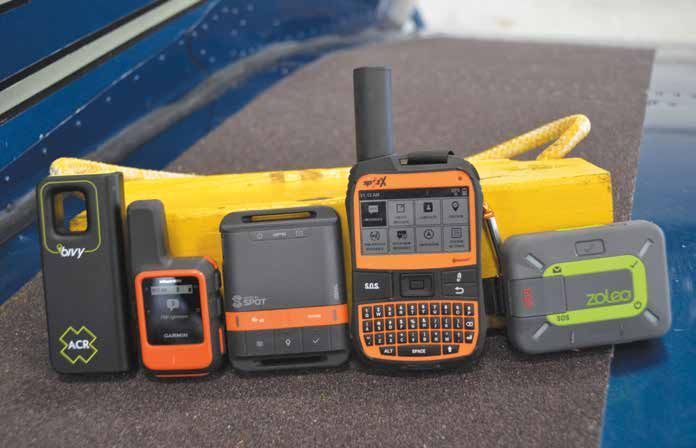
Those are some of the latest mini satcom devices we rounded up as part of our portable satcom market scan. If you haven’t shopped the portable satcom market in a while you’ll be surprised at the capability and belt-and-suspender backup they can provide when flying out of cellphone coverage. But unit feature set, app compatibility, form, function and satellite data costs all make the buying decision complicated.
Portable satcom communicators are a worthy addition to the survival gear when cell coverage quits. Press the SOS button and a response center will dispatch first responders to the rescue. But today’s portable locator devices, or PLDs, take the rescue process to a better level with text capability through an app. Staying in touch with responders while they find you could mean a better survival chance. In flight on an active flight plan, there’s a healthy level of third-party tracking capability, which could automatically trigger search and rescue if you’re overdue.
Serving double duty outside the aircraft for boating and adventure sports, the current-gen PLDs have matured and offer two-way communications via text and email, plus they have Bluetooth. All require a satellite subscription data plan, and while the names SPOT and inReach are familiar, and most do the same things, choosing one may not be easy. Here’s a primer to kick off the shopping.
HOW THEY WORK
Think satellite smartphone. Short messages can be texted or emailed to your contacts, and custom predefined messages with your location can be sent to a predefined contact list. The devices drop electronic breadcrumbs, with refresh frequency based on the data plan.
With GPS lat/lon included in the tracking and SOS messages, the search area can be narrowed—a good thing. A 7.5-minute tracking resolution at 120 knots indicated airspeed delivers a search area of 706 nautical miles, and reduced to 2.5 minutes, the search is narrowed to 78.5 nautical miles.
Two-way messengers have a dedicated telephone number and email address. When you send a message from your smartphone, the recipient will see either the email address or telephone number of the PLD—not your smartphone’s email or telephone number. Pro tip: Include your PLD’s telephone number and email address in your smartphone’s email signature, and share the device’s info with your contacts so your messages don’t end up in their junk mail folders.
All the PLDs we focused on, with the exception of SPOT Gen4, have lithium batteries and USB charging ports. Battery life will be impacted by factors like sky obstructions, air temperature, tracking interval and battery capacity. All brands have dedicated apps. We suggest trying them all at AirVenture or Sun n’ Fun for a feel of the interface and hardware. Some countries (India, China, Iran, North Korea, Thailand, Vietnam, Cuba and Russia) prohibit these devices, and yours could get you fined and jailed.
Satcom networks are growing. There are 4852 satellites in orbit, up from 2200 in 2020. First- and second-gen Low Earth Orbit satellite networks (LEO) deliver connectivity upward of 1.4 Mbps, making LEO perfect for voice calls, text messages and short emails. PLD manufacturers purchase satellite connectivity from provider Iridium on a wholesale basis, add margin and bundle their services into their service plan subscriptions. The SPOT product is unique as a division of the Globalstar satellite network.
Globalstar invested big starting in 2010 on its second-gen LEO network, which doesn’t provide worldwide coverage. If ferrying, keep in mind there may not be usable signal over the poles, the high Arctic and Greenland.
The Iridium satellite constellation is made up of a fully meshed network of 66 cross-linked satellites that orbit 485 miles above the Earth. In 2019, Iridium upgraded the network with next-gen satellites. Traveling at more than 18,000 MPH, each satellite makes a full orbit of the planet every 1.5 hours. That means one passes overhead every ten minutes, and there is generally worldwide coverage.
No matter the network, consider limitations in reception because direct line of sight is required. Obstructions (buildings, trees, your own body) can block the line of sight, which can slow transmission time for your messages. They need a good shot of the sky, and close to the aircraft’s windshield is usually the best location.
BIVY STICK
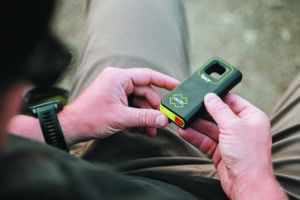
In 2021 ACR Electronics acquired Bivy, adding subscription revenue to ACR’s business model. The Bivy Stick’s shape is unique and has a lithium ion polymer 1400 mAh battery with a USB-C port and includes a USB-C to USB-A cable. Charge time is between two and four hours, depending on power source. To preserve battery life, Bivy hibernates for 15 minutes and automatically wakes up to check for messages (then hibernating five minutes after checking for messages). The Bivy Stick, measuring 3.19 by 1.57 by 6.77 inches, comes ready to use with any GoPro mounting system, using the provided GoPro adapter.
During our testing, we found the waterproof switches difficult to press with a finger. Bivy recommends using a dull instrument like the eraser-end of a pencil to press the buttons—not the best in an emergency activation. The next production run, we’re told, will solve the issue.
Bivy uses message credits as the basis of the subscription plans. The Basic and Plus plans have 20 and 60 credits per month (respectively). Each message, standard weather report and location share is one credit. With Bivy set to two-minute tracking, five credits will be charged every hour. Unused credits will roll over to the next month. Without an unlimited plan, overages—including spam and unsolicited messages—are charged at 50 cents per message. If you get spam messages, let the company know about it for a credit.
GARMIN INREACH MINI 2
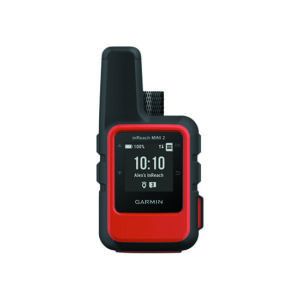
At press time, Garmin announced the latest-gen Iridium-based $399 inReach Mini 2, and we just received the demo for our long-term product test pool. See the sidebar on page 14 for first impression, and hit the Mini review in the June 2018 Aviation Consumer. For now, Garmin said the original $349 Mini will stay in the product line along with the new Mini 2, which works the same way and has a tight Bluetooth interface with the Garmin Pilot and Garmin Explore apps, plus it interfaces with some Garmin wearables and portable navigators. It weighs 3.5 ounces and in our testing, we found the Mini’s receiver performance good.
There are good reasons to spring for the Mini 2 for the extra $50. It has a better—not bigger—display (0.9 by 0.9 inches, with a 176 by 176 pixel resolution, versus the 128 by 128 count on the original Mini) and a IPX7 waterproof case.
The inReach Mini series has a simple control set with a total of six buttons, and the Iridium satellite antenna is nicely molded into the chassis. The control set is logical and durable.
Free-form messages allow you to type as you wish directly from the Mini and also from the Garmin D2 Charlie Pilot’s watch, plus from some Garmin Forerunner and Fenix-series watches. It connects wirelessly with Garmin’s ANT+ technology, which is also used for many other Garmin products.
When sending messages from the Mini, you scroll through the functions using the up and down keys on the right side of the case. To type out a new message from scratch, scroll through the menus and select the Write Message option (with the OK key). Typing a message can be slow because you pluck each character (including space and backspace/delete)—one at a time—from a vertically scrolling alphabetical list on the far right side of the display. Once you have your message in place, hit Send and it’s off. You’re limited to 160 characters per message. Forget about photos, although you can post a message to social media, including Facebook, Twitter and to your MapShare page.
You can also receive messages, of course, and the device checks for new ones at predefined 10-second intervals. You can customize the time intervals, but the more you update, the more battery life you’ll eat. You can manually check for new messages, but the most frequent two-minute interval is only available on the premium subscription plan.
SPOT
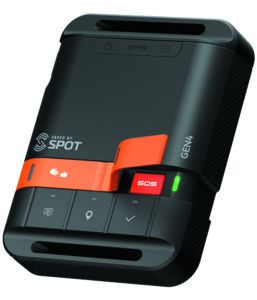
SPOT Gen4 is the company’s latest one-way PLD, launched in August 2020. On the Gen4, SPOT moved the Micro USB port to the battery compartment. There’s a tradeoff. While this design change allows the unit to obtain IP68 water-resistant certification (up to 6 feet for up to 30 minutes), it requires the battery cover to be removed to connect it to an external power source like a USB power bank or aircraft panel power.
The SPOT Gen4’s physical design has changed: It’s slightly larger with a rectangular (versus oval) shape. The chassis color was changed to slate grey with orange accents.
The SPOT Gen4 uses four Energizer lithium AAA batteries, and there’s a built-in motion detection circuit, placing it into sleep mode if no motion is detected. The motion detection can be used to monitor your aircraft while parked, sending an email/text when it’s moved.
Some pilots have found that SPOT devices will create interference with aircraft GPS system. SPOT advises to keep the unit away from aircraft navigation systems or GPS antennas. That may not be easy in some aircraft.
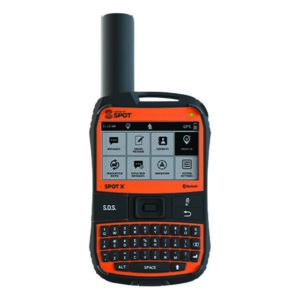
SPOT X, launched in May 2018 (see the October 2018 Aviation Consumer review), is a two-way communicator and while the most current model has Bluetooth, SPOT sells refurbished models without Bluetooth at a $50 savings. Unlike the other PLD devices, SMS and email addresses must be added to the device either through the app or website. SPOT X cannot use the contacts on your smartphone’s native contact list, and it does hold up to 70 contacts and/or contact groups.
SPOT X sports a sunlight readable 2.7-inch screen, weighs 7 ounces and is IP67 waterproof rated. The keyboard is backlit and we found it easy to type with. The kit includes a micro USB cable and AC/DC charger with a full charge achieved overnight. The rechargeable battery provides 240 hours of battery life when in 60-minute tracking mode.
A rocker style cursor pad called the Directional pads allows the user to navigate between menu pages and to make selections. The key in the center of the Directional Pad acts as the Select key.
Working alongside SPOT X is the SPOT App for iOS and Android, which can be used to send and respond to messages using your smartphone. Those with smaller fingers should find that typing on SPOT X’s keyboard is not an issue. But for folks with larger fingers, we think the app might be more convenient. To date, SPOT said its devices are responsible for over 8000 saves.
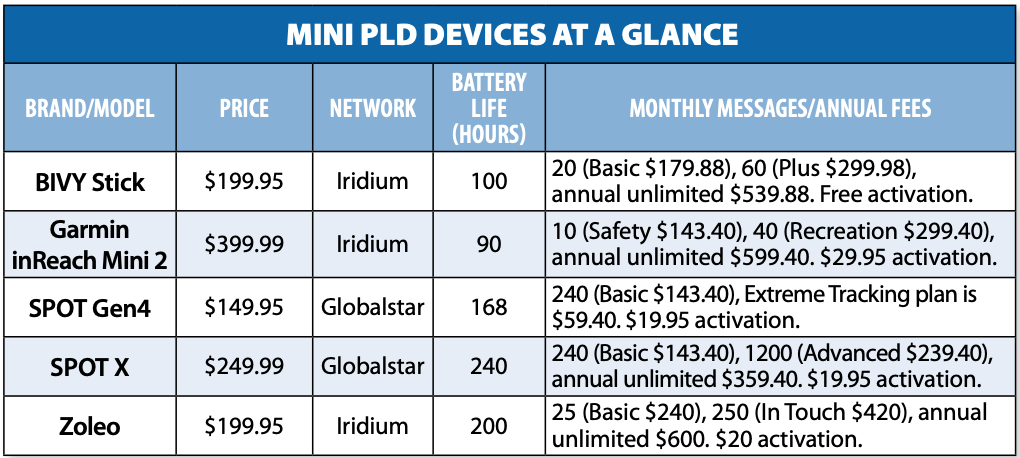
ZOLEO
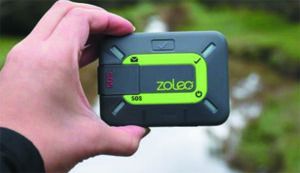
Perhaps an unfamiliar name to many, Zoleo is a joint venture between Beam Communications (founded in 2000) and Roadpost Inc. (founded in 1991). Beam manufacturers the Zoleo hardware, while Roadpost looks after sales, marketing, billing, Iridium wholesale activities and technical support.
Zoleo’s PLD has an IP68 water-resistant case when submerged to 4.9 feet for 30 minutes and it weighs 5.3 ounces. It uses a Micro USB Type B connector to recharge the lithium-ion battery, which has a 200-hour battery life based on checking messages every 12 minutes. It has GPS and GLONAS navigation, plus Bluetooth that supports one connected user at a time.
Optional accessories include a cradle kit for attaching it to a GoPro style mount, and the device has a belt clip insert and camera mount insert, a universal mount kit that includes a USB vehicle charger, RAM suction cup and a float designed specifically to keep the Zoleo device afloat when placed in water.
Zoleo’s app supports both iOS and Android devices, but is really built for smartphones. The app will run on a tablet, but only in portrait mode, which might be an issue for use in the cockpit. The number of characters in a message is limited to 160 in SMS/texts, 200 in emails and 950-plus in app-to-app messaging. The app support English/French, with six other languages in the works.
The app has a nifty Find My Device feature that when activated causes the Zoleo hardware to initiate an audible signal and flash the LEDs purple.
To economize satellite communications costs, the Zoleo app is able to send and receive messages in three ways: natively over the Iridium satellite network, using your smartphone’s Wi-Fi connection or using your smartphone’s cellular connection. Technically this is called least-cost routing. Sending a message over the app will use the satellite network if it cannot send a message over cellular or Wi-Fi—a definite billing advantage.
By default, the Zoleo device will check for new satellite messages every 12 minutes, supporting settings for 12, 24, 60 and always on. However, the less often the device checks for messages, the longer the battery will last.
A BIT ON SOS
In addition to messaging, obviously a big reason for buying one of these devices is for SOS capability. This is a widely misunderstood concept. Pressing the SOS button or the HELP button will send an alert to a third-party emergency dispatch service, and not directly to a government SAR agency. In North America, SAR services, for the most part, do not have user fees. However, that may not be the case in other parts of the world as the cost of “come get me” and medical evacuation services comes at sizable expense.
Garmin and Zoleo use an internal service called International Emergency Response Coordination Center (IERECC). BIVY utilizes Global Rescue (https://ss.globalrescue.com/partner/bivy/), while SPOT uses FocusPoint International. These ERCs are staffed 24/7 with trained personnel who have access to first responders.
There’s some false-alarm backstop in place. Once an SOS message has been received, the ERC calls you and your emergency contact(s) to determine if it’s a real emergency. They locate and notify emergency first responders and then maintain an open line of communication, including providing updates of your location as we’ll as keeping your emergency contact(s) informed.
I generally have the PLDs set up with the following message: “This device is used in an aircraft. When SOS is received from this device, call the Trenton Joint Rescue Coordination Center 613-965-3870 or 800-267-7270 and tell them this is an aircraft distress call.”
This is an important step to ensure that SAR is contacted first rather than police or firefighters. Don’t forget to change this message when you’re using your PLD for other outdoor adventures. It goes without saying SOS should only be used during life- threatening emergencies. You may be liable for additional charges if you send a false SOS message. In countries where SAR services are provided on a fee-for-service basis, you can upgrade to ERC Member Benefits for reimbursement of SAR costs at an affordable annual fee.
FSS INTEGRATION
U.S. Leidos Flight Services offers surveillance-enhanced SAR (SE-SAR), using either a fixed device (like SpiderTracks, which we’ll cover in a separate article) or portable PLD. The system monitors position reports sent from the PLD, when activated within your Pilot Web account at 1800wxbrief.com. Adding a PLD to your Pilot Web account is pretty simple.
When the FSS system receives an SOS signal from your PLD, SE-SAR will alert an inflight specialist who will begin the SAR process, typically much faster than traditional procedures. To set it up, simply select the SE-SAR button on Dashboard, and add a device. You’ll need to know the ESN of the device to get started. If you are a user of the Nav Canada online flight plan system https://plan.navcanada.ca/account/login/?next=/, there is a space on the flight plan for your PLD’s shared page.
PRICING
Pricing for the mini PLDs evaluated are similar. There is a one-time hardware acquisition price, monthly or annual service fees, optional services, hardware replacement fees and message overage fees. All of the PLDs include 24/7 SOS monitoring and alerting. All of the vendors have different subscription levels, delivering different amounts of messages before overage costs are applied.
SPOT Gen4 is the least expensive, with a total first-year cost of $313.34. Garmin’s inReach Mini 2 is the most expensive, with a total first-year cost of $1029.34 (unlimited plan). Frankly, the complexity of the plans creates an eye chart suitable for your next aviation medical exam. And, don’t forget that the plans auto-renew every year and are automatically billed to your credit card. There’s also tax on all plans.
Garmin’s bare-bones Safety plan is the company’s cheapest one, using a pay-as you-play approach to pricing. At $11.95 per month, the plan includes unlimited SOS and preset messages, with 10 text messages per month. However, location requests and send/track points are $0.10 each, with message overages at $0.50 a message. Garmin offers a Freedom plan, where the service is billed monthly during the months that the service is used. The Freedom plan’s monthly cost is more expensive than an annual contract and has an annual charge of $34.95. Service can be suspended one month at a time.
Zoleo’s plan can be suspended for $4.00 per month, and will not transmit messages, including SOS. Zoleo has a fair-use policy, allowing it to limit usage or suspend your service if your actual monthly usage greatly exceeds average customer usage.
All of the PLD vendors offer an optional crisis assistance plan delivered by the emergency response organization that they are aligned with. These services are similar in nature, typically including travel, medical and SAR assistance.
Pro tip: Read the fine print of the provider’s terms and conditions..
CONCLUSION
These mini satellite communicators all do what they’re intended to do, which is maintaining the cyber umbilical cord. Aside from SOS and tracking, they fill in the gaps left by your cellphone at higher altitudes and in the wilderness. As they say, an ounce of technology is worth a pound of cure.
How you choose will depend on your taste of the device’s app, the hardware’s size, control set and data plans. We’re impressed with Garmin’s Mini interface capability, the control set on the Spot X and the small stature of the BIVY Stick. We’ll see how they all hold up after a year in our long-term test pool.




